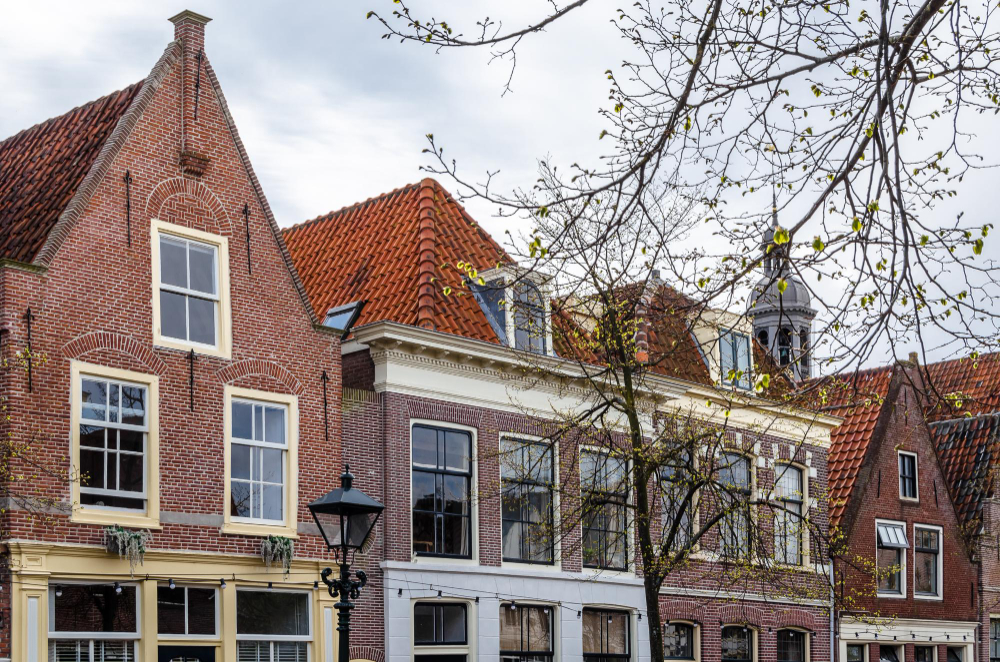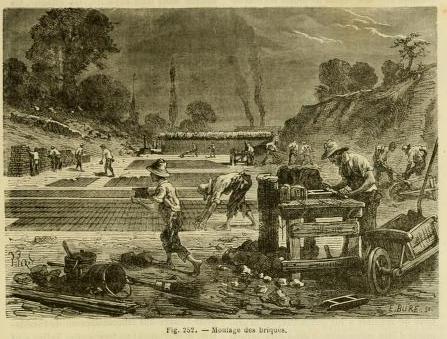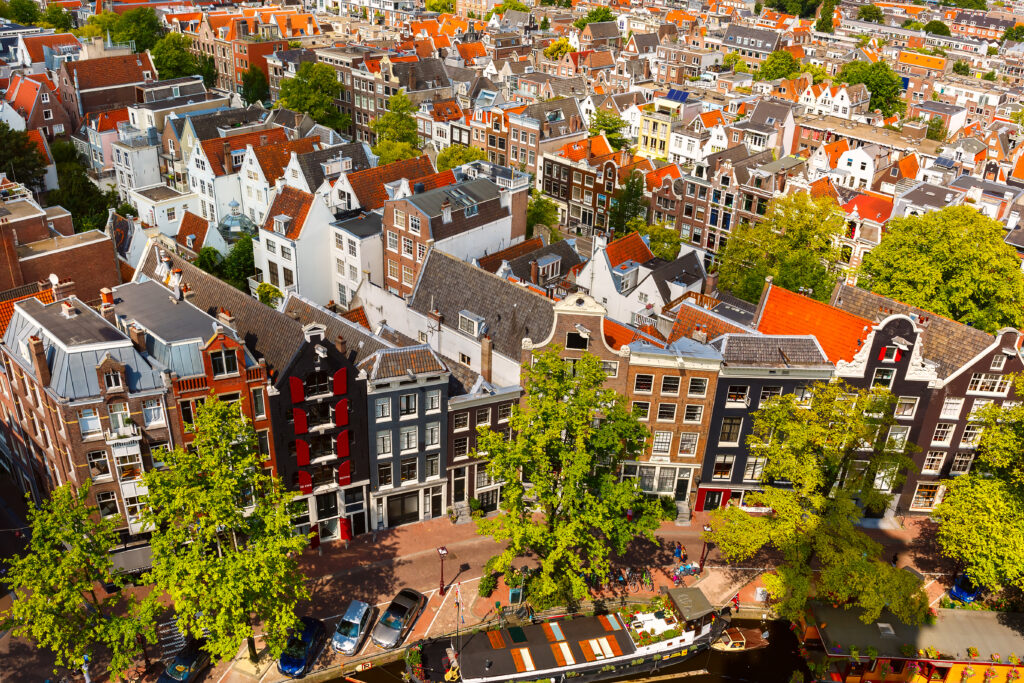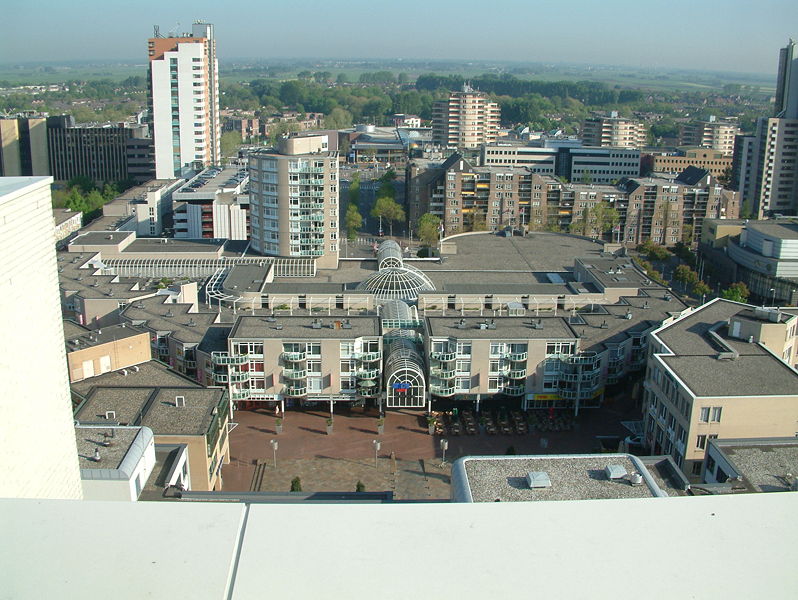Visitors to the Netherlands will probably be struck by a very specific element about this country. Things tend to look, well, quite the same.
By this, we do not mean that there aren’t different architectural styles. They are certainly out there — from Art Nouveau to Art Deco, post-war modernism, and more traditional architecture.
What we mean is a certain degree of aesthetic similarity. Whether you’re looking at the red bricks or the colour palette that’s similar from the pavement up to the facades, it seems like there is tight control over how the Netherlands should look.
How did all of this come to be? What’s up with all the bricks? How does the enforcement of colour palettes work?
Bricks, bricks, and some more bricks
To start off our incursion into architecture, we need to talk about the building blocks of this country: the bricks. You must have noticed them too, as they are pretty much everywhere, and odds are you’ll run into more brick buildings than the un-bricked variety.

But why specifically brick compared to any other building material? Well, to answer this question, we need to take a look at the past.
READ MORE | Dutch architecture in South Africa you can still see today
It’s actually believed the word “brick” might have Dutch origins. The Dutch have been developing bricks ever since the Middle Ages, and their production only increased with time.
However, despite their vital role in construction, the brickmakers were usually ostracized members of society belonging to lower social classes.

Brick factories were on the outskirts of cities to keep the dust and smoke away from the centres. A report from 1873 from a municipality near Nijmegen stated that “as the number of brick kilns increases, so does poverty.”
Child labour was intensively used in making bricks, including in the 19th century. Children who were eight years old and younger would work 16-hour shifts, which might seem downright shocking in the welfare state the Netherlands has today.
Now, the reason that the Netherlands made so many bricks is because of an abundance of clay. Rivers in the country, like the Ijssel, the Rhine, or the Waal, were great sources of clay, which is the main ingredient needed in making bricks.
The bricks were not only used domestically but exported as building material to neighbouring countries as well.
You can find great examples of Dutch brick architecture throughout the United Kingdom. Other places with Dutch bricks can be found in the former colonies throughout Southeast Asia.

Now that we’ve figured out a brief history of bricks in the Netherlands, let’s move on to another important element that makes everything look similar in the Netherlands — urban planning.
Urban planning
Depending on where you’re coming from, urban planning might not really be a concept — like if you come from a place with winding and twisting streets or chaotically built buildings of various sizes and not much sense of order.
Well, the Netherlands is certainly the opposite of that, and it’s not hard to see why. With a small area size and a population of 17 million, screwing up urban planning means the country wouldn’t function well.
One thing that definitely lends a helping hand in urban planning here is that the country is relatively flat, so architects and planners don’t need to work around things like mountains.

While I miss the chaos of cities in my home country, there’s something to appreciate about the orderly way Dutch cities are built, even if it makes them quite bland at times.
The most major event you need to know about in recent history is the construction boom that followed WWII. This boom happened at the same time as a population boom, which led to overcrowded inner cities that became gradually unsafe.
READ MORE | A short history of Dutch spatial planning
However, with space available outside of The Randstad, urban planners started to build cities, such as Zoetermeer and Hoofddorp.
And while they are certainly effective, they are also terribly bland, unmemorable, and look-alike in the sense of architecture, colours, and general vibe.

General aesthetics
Let’s say that you are now the proud owner of a Dutch home. Bored with all the brown on its facade, you feel that it’s high time you give it a makeover.
Let’s say you choose to paint it all blue. After that, you also think that it wouldn’t be bad to add an extra floor or two. You commence your work when — surprise! You get a fine through your newly blue-painted letterbox. What on earth has happened?
READ MORE | The 10 best authentic Dutch villages that you have to visit
Enter the Welstandscommissie (Welfare and Monuments Committee).
Any sort of building permit, facade modification, extra floor and the like need to pass through them first. They are responsible for making sure all new constructions or modifications follow rigorous guidelines, lest everything turns completely chaotic.
READ MORE | 8 carbon copies of the Netherlands across the world
So, if you’re planning on changing something about your building or constructing something new entirely, make sure you give them a call in order to avoid a hefty fine. 😉
Is there anything we missed that influences the fact that everything looks the same in the Netherlands? Let us know in the comments! 👇




Bland? Thats the first time ive read that people find architecture in NL bland. Get out of your vinexwijk, lol.
Are you seriously writing this about the country of endless row houses seemingly pumped out from some row house factory and the same bricks from Maastricht to Groningen?
post war cities need to be bombed, the netherlands has enough cities and villages with old beautiful dutch architecture & brick work needs to stay.
Trivia: The Castle of Good Hope, built in Cape Town by the Dutch in the 1660s, was build from the ‘free’ bricks that the Dutch ships en route to the East carried as ballast on their outward journey, and would offload at the Cape when they took on supplies.